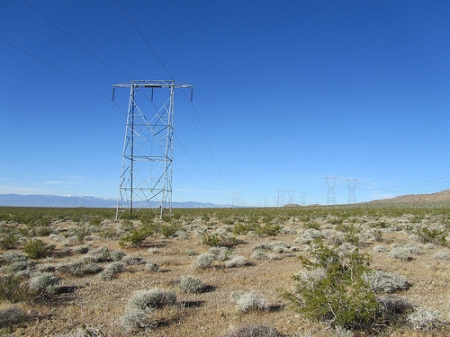Solar and wind industry leaders are hailing interstate transmission line regulations adopted Friday by the Federal Energy Regulatory Commission (FERC) as a move that could boost renewable developments across the rural parts of the U.S.
The move by FERC on Friday paves the way for new planning and cost requirements that are expected to ultimately lower the price of transmission, especially to metropolitan areas where most of the power in consumed. Organizations like the American Wind Energy Association (AWEA) and the Solar Energy Industries Association (SEIA) say the move will help update an aging grid and will allow proposed developments in remote regions to push forward.

Many projects have struggled to gain financing because of questions surrounding who will pay for transmission projects. The new rules state those receiving the power will share in the costs, rather than being paid for only by those building the power development. The vote also creates a more regional planning and regulatory approach to the future of interstate transmission based on individual state policy.
According to the North American Electric Reliability Corporation (NERC), whose stated mission is to ensure the reliability of the North American bulk power system, approximately 60 percent of all new resources added to the grid by 2019 will come from wind and solar.
“Strengthening and expanding the system for the reliable integration of these resources will require significant investment in transmission,” said FERC Chairman Jon Wellinghoff.
By 2020, NERC expects a 9 percent increase in new circuit miles of transmission. Most of these miles will be added in the west, southwest, New England and parts of the southeast. Of the added miles, about half will be needed for reliability, and a quarter will be needed to integrate renewable sources like wind and solar. The remainder will be needed for hydro, fossil fuels and nuclear generation.
In a press release issued Friday, Rhone Resch, president and CEO of SEIA, said that the ruling “will help the solar industry overcome a significant hurdle impeding the development of the more than 25 gigawatts in the utility-scale solar power pipeline. … Today’s action is an important step in the effort to modernize America’s transmission grid in a way that benefits consumers, investors and communities.”
Resch pointed to places like Arizona, New Mexico and California as areas that may benefit most from the changes. “This rule will facilitate the development of utility-scale solar power in the Southwest, where some of the world’s best solar resources are found, but are restricted by lack of adequate access to the nation’s rapidly aging transmission infrastructure.”
AWEA CEO Denise Bode said the move helps policymakers get past one of the biggest questions facing transmission — who will pay for upgrades? “This is an important step toward removing the main hurdle: how to make sure all users pay their fair share of new lines,” he said. “Preventing free-riding will help improve grid reliability, and reduce electricity bills by facilitating access to lower-cost resources, including wind energy.”
Bode said the new policy requires transmission providers to file regional plans for transmission lines that ensure that consumers who do not benefit do not pay, and conversely, those who do benefit do pay.
“In addition to a more reliable electric grid, consumers will also benefit from access to long-term lower energy prices when transmission barriers to competition are removed,” added AWEA Senior Vice President for Public Policy Rob Gramlich.
 Follow
Follow